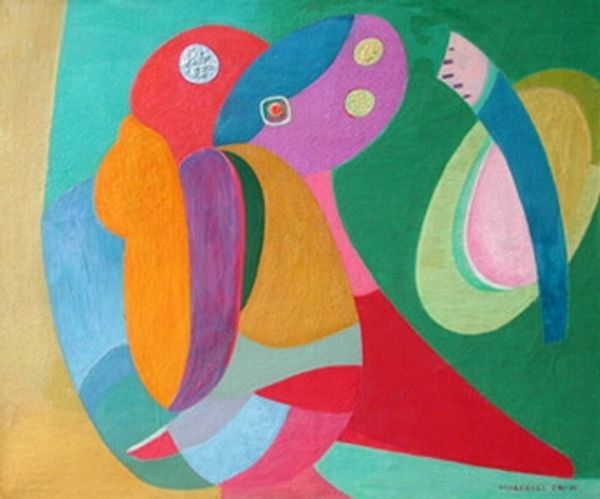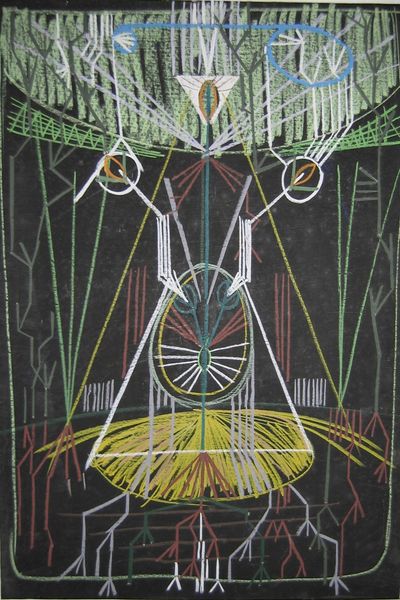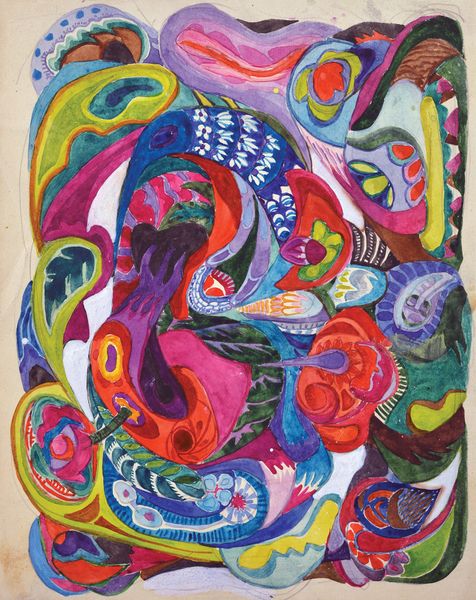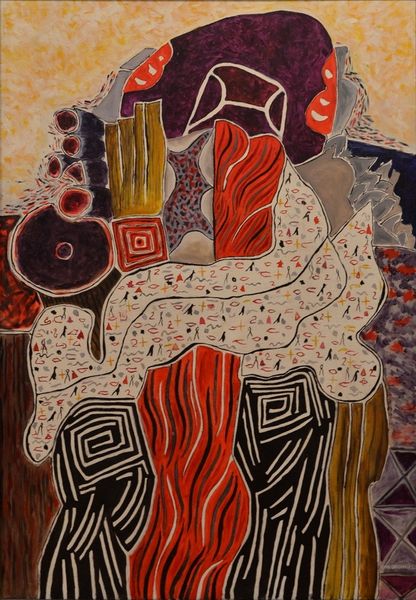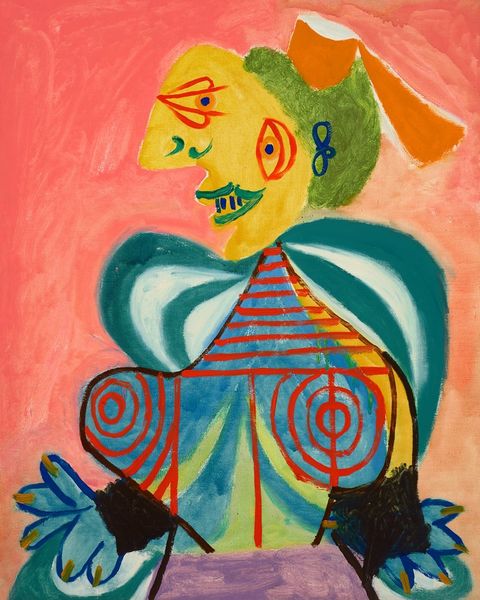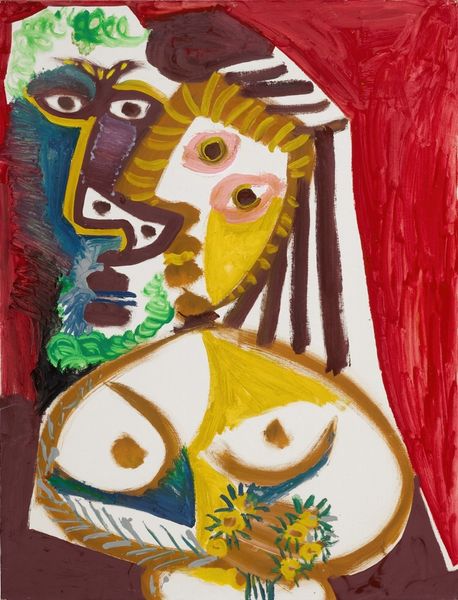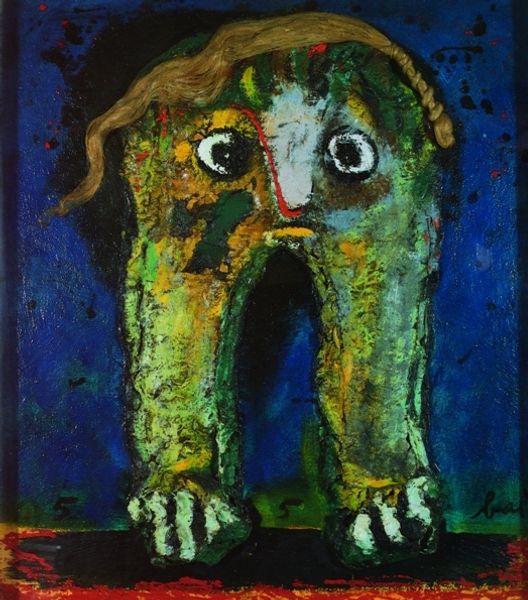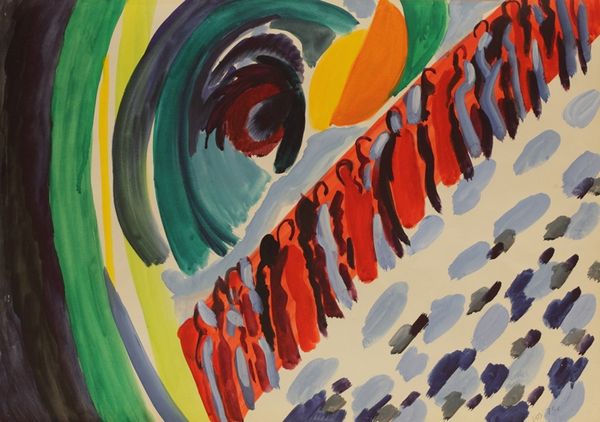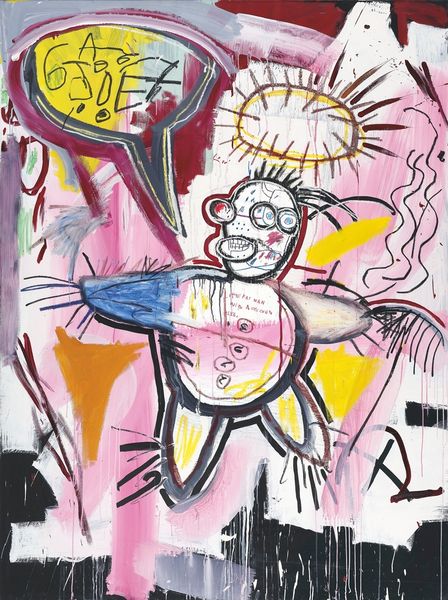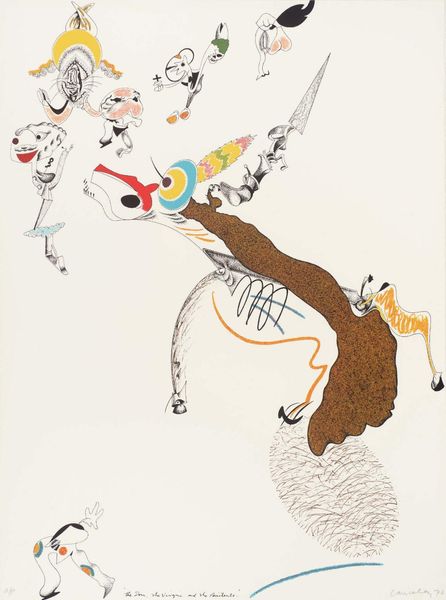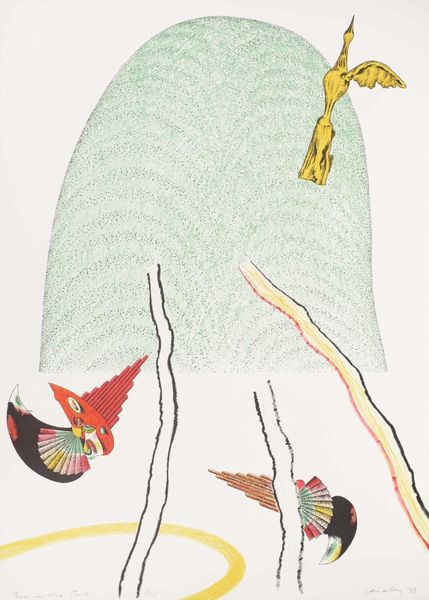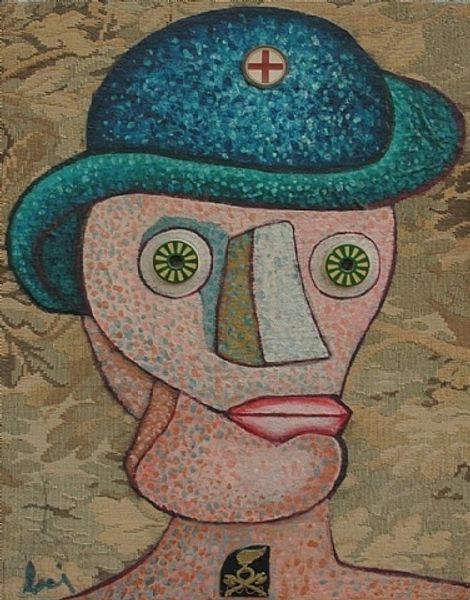
mixed-media, collage, acrylic-paint, ink
#
portrait
#
cubism
#
mixed-media
#
collage
#
mandala
#
acrylic-paint
#
ink
#
male-portraits
#
naive art
#
abstraction
Copyright: Enrico Baj,Fair Use
Curator: Immediately striking. What an unusual combination of geometric form and textural flourish. Is it unsettling, or…playful? Editor: Well, let’s dive into what we’re actually looking at. This is Enrico Baj's "Ritratto immaginario di Asger Jorn," dating from 1976. It’s a mixed-media work incorporating collage, acrylic paint, and ink, currently residing here at Tate Britain. Curator: Mixed-media indeed. The interplay of those mandala-like eyes and that severe, almost architectural nose… It's quite disorienting! But there's a definite method to the apparent madness, isn’t there? Note how the repetitive patterns resolve in asymmetrical details—creating visual interest through variation, which helps to focus our eye on specific areas. Editor: I see it as a kind of critical homage. Jorn was a co-founder of the avant-garde CoBrA group, which challenged artistic conventions and social norms post-World War II. Baj, also associated with anti-art movements, offers here not just a portrait, but an engagement with Jorn’s legacy of artistic revolt. Curator: Revolution reduced to an aesthetic schema? Possibly! But observe also the background. That field of scattered dots almost undermines the rigidity of the facial structure, preventing it from becoming overtly dogmatic. This detail is critical, as the pattern offsets what would otherwise become too stable a composition. Editor: Perhaps it reflects the instability of memory itself. Jorn died only a few years after Baj made this portrait. This piece can thus be seen as Baj grappling with Jorn's impact and the way he wished to remember his late contemporary. Curator: A point well-taken! The biographical detail lends this image much richer texture and nuance. Editor: Precisely! And it speaks to the way portraiture shifts from mere representation to cultural commentary. Curator: Ultimately, what remains is a powerfully structured image, regardless of the subject it aims to depict. Its formal elements are both engaging and confounding. Editor: Indeed. By examining its historical context, and focusing on its artistic approach, we’ve begun to unlock some of the portrait's layered significance.
Comments
No comments
Be the first to comment and join the conversation on the ultimate creative platform.

